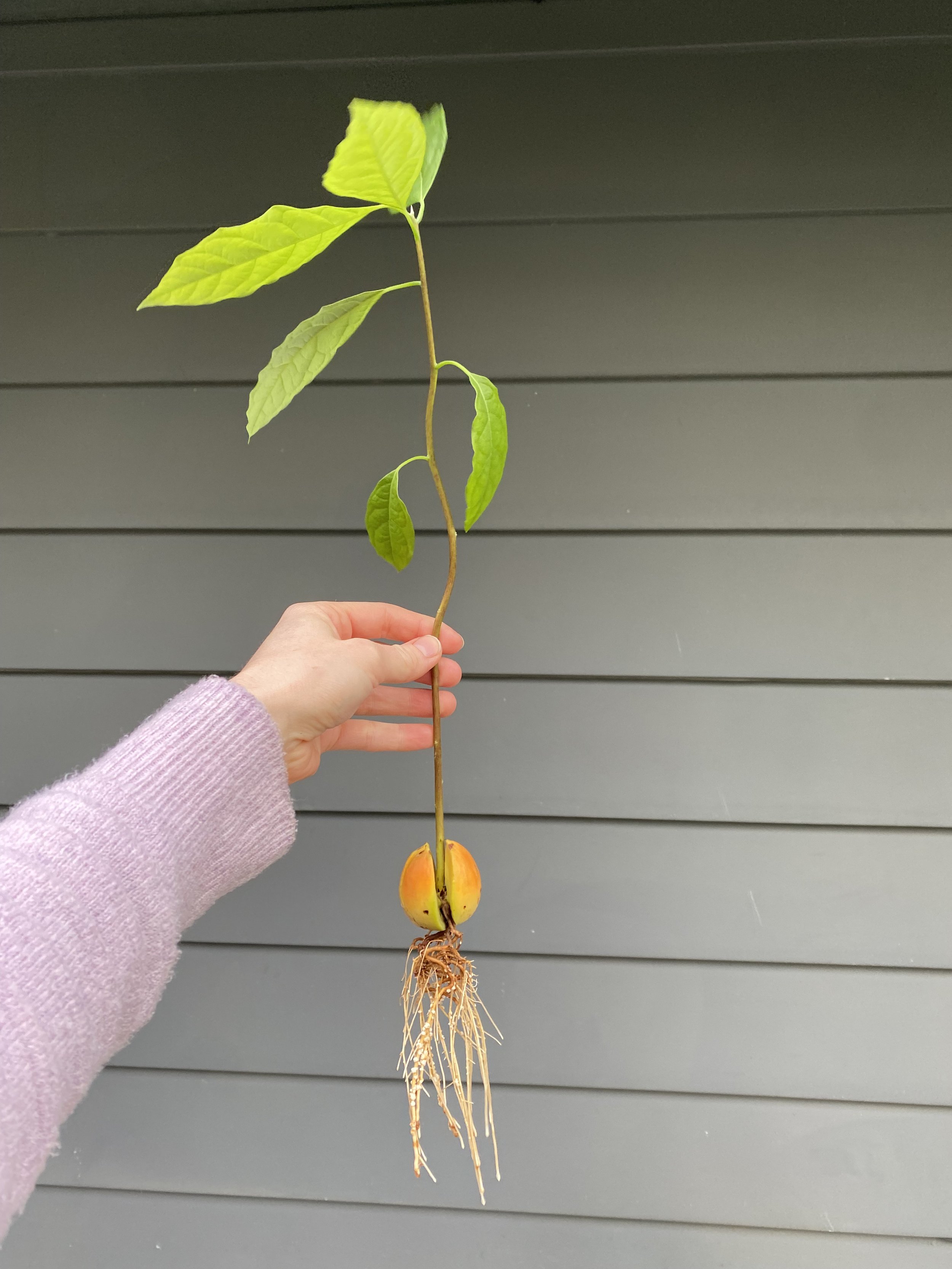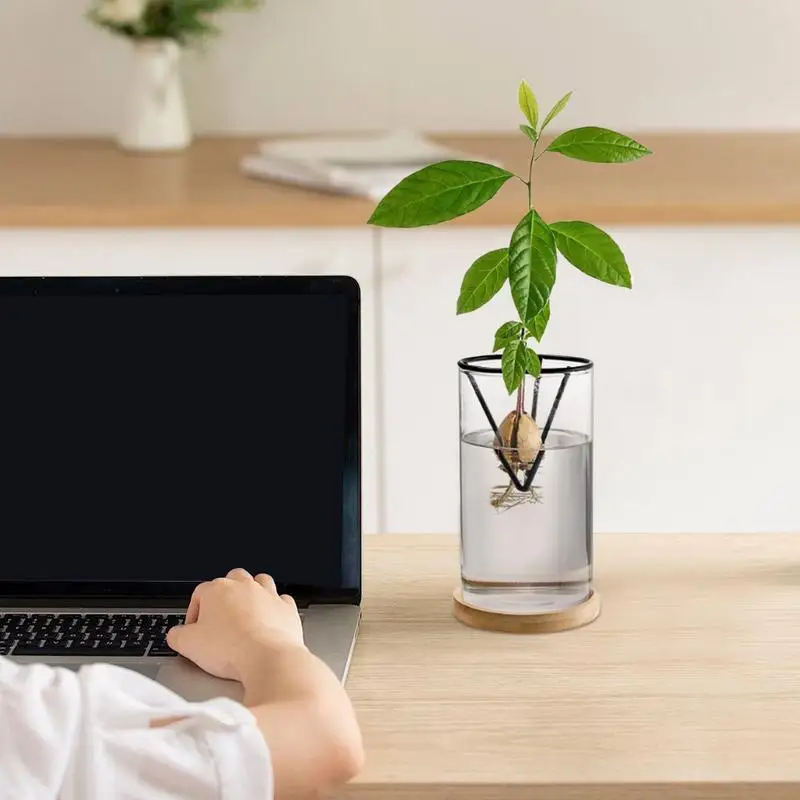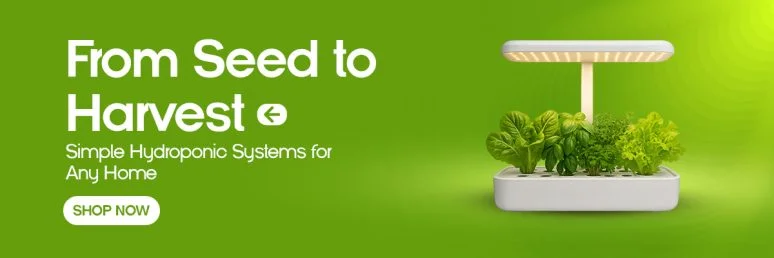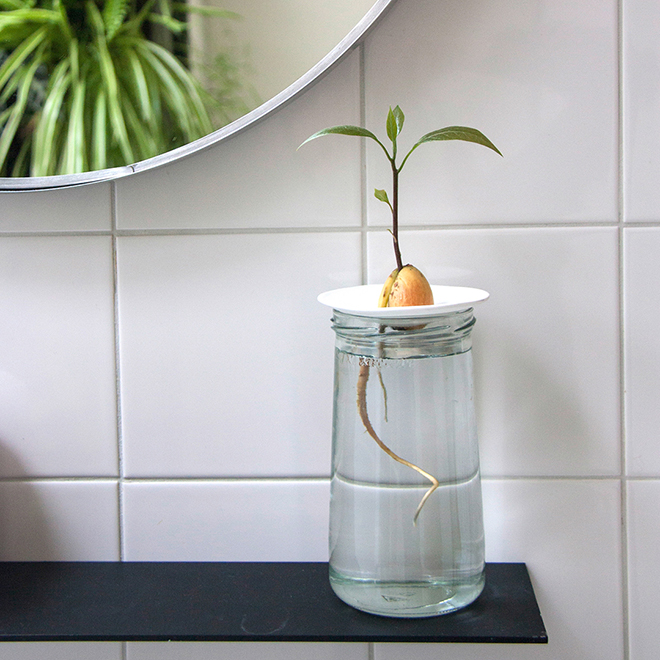Hydroponic Avocado Trees: Best Systems, Nutrients, and Care Tips
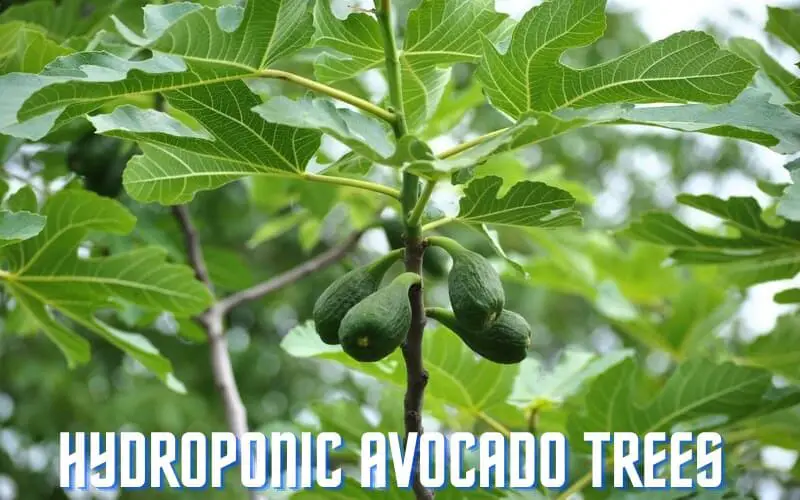
Article-at-a-Glance
- Hydroponic avocado systems allow for year-round growing regardless of climate, with Dutch Bucket and DWC systems being most effective for long-term growth
- Successful hydroponic avocados require specific nutrient solutions with proper N-P-K ratios and micronutrients maintained at a pH of 5.5-6.5
- While hydroponic avocado trees can flourish indoors, they typically need 3-5 years before fruit production, even under optimal conditions
- Root support and container size are critical factors – mature avocado trees need at least 20-gallon reservoirs to accommodate extensive root systems
- Temperature control between 60-80°F and supplemental lighting providing 12-14 hours daily are essential for healthy growth
Growing Avocado Trees Hydroponically: What You Need to Know First
“Avocado Tree Plant Growing Vase Kit …” from www.amazon.com and used with no modifications.
Growing avocado trees hydroponically marries traditional horticulture with modern soilless techniques, opening up possibilities for year-round cultivation regardless of climate. Unlike conventional soil cultivation, hydroponic avocado systems deliver nutrients directly to the roots, dramatically accelerating growth rates and allowing for precise control over growing conditions. Before diving in, understand that hydroponic avocados require significant patience—these trees typically need 3-5 years before bearing fruit, even in optimal conditions.
Success with hydroponic avocados hinges on understanding their unique requirements. Avocado trees develop extensive root systems that demand spacious containers and careful oxygenation to prevent root rot. They also require consistent light exposure—at least 12-14 hours daily—and stable temperatures between 60-80°F. Humidity levels between 60-80% mimic their natural environment and encourage healthy leaf development.
The most significant advantage of hydroponic cultivation is environmental control, particularly beneficial for growers in non-tropical climates. By managing nutrient delivery, light exposure, and temperature precisely, hydroponic systems can support avocado trees year-round in regions where outdoor growth would be impossible. While soil-grown avocados may eventually outproduce their hydroponic counterparts in perfect outdoor conditions, indoor hydroponic systems offer reliability and consistency that outdoor environments cannot guarantee.
5 Best Hydroponic Systems for Avocado Trees
“I would like to keep this avocado plant …” from www.reddit.com and used with no modifications.
Selecting the right hydroponic system dramatically impacts your avocado tree’s long-term success. Not all hydroponic methods suit the specific needs of these tropical trees, particularly as they mature and develop extensive root systems. The ideal system balances oxygenation, nutrient delivery, and space for root expansion while remaining manageable for home growers.
1. Deep Water Culture (DWC) Systems
Deep Water Culture systems offer an excellent foundation for beginning hydroponic avocado growers. In DWC setups, the avocado’s roots hang directly into nutrient-rich, oxygenated water, promoting rapid nutrient uptake and robust early growth. These systems typically use air stones connected to external pumps to maintain dissolved oxygen levels critical for preventing root rot. For avocado trees, modified DWC systems with larger reservoirs (minimum 10-15 gallons) work best to accommodate their eventually massive root structures and prevent solution temperature fluctuations.
2. Dutch Bucket Systems
Dutch Bucket systems represent perhaps the most suitable hydroponic method for mature avocado trees. These systems utilize large containers (typically 3-5 gallons each) filled with growing medium like expanded clay pellets or coconut coir, providing crucial structural support for top-heavy avocado trees. Nutrient solution drips into each bucket from above, circulating through the root zone before draining back to a central reservoir. This design excels at providing the perfect balance of moisture, oxygen, and stability—particularly valuable as avocado trees grow larger and develop extensive root systems. For more information on how big hydroponic plants can get, explore this resource.
The modular nature of Dutch Bucket systems allows for easy expansion as trees mature, simply by connecting additional buckets to the existing irrigation network. For especially large trees, multiple buckets can be clustered together to create a unified growing area. The growing medium also provides insulation against temperature fluctuations, protecting sensitive avocado roots from shock. Learn more about how big hydroponic plants can get to better plan your system’s expansion.
3. Ebb and Flow Systems
Ebb and Flow (flood and drain) systems periodically flood the growing tray with nutrient solution before allowing it to drain back to the reservoir. This cyclical approach creates ideal conditions for root oxygenation while ensuring complete nutrient coverage. For avocados, larger-scale Ebb and Flow systems with deep growing beds (at least 10 inches) provide necessary room for root expansion while the flooding cycles help prevent salt buildup around roots.
The primary advantage of Ebb and Flow for avocados is the excellent root zone oxygenation between flood cycles, promoting healthy root development and reducing disease risk. These systems can be custom-built to accommodate trees of various sizes, though they typically require more space than other methods. Timer reliability becomes especially critical with avocados—if flooding cycles fail, these moisture-loving trees can quickly experience drought stress. For more information on hydroponic systems, check out our article on hydroponics explained.
4. Nutrient Film Technique (NFT)
Nutrient Film Technique systems circulate a thin film of nutrient solution continuously over the roots while leaving upper portions exposed to air. While excellent for leafy greens and smaller plants, NFT presents significant challenges for avocado trees. The shallow channels typical of NFT systems simply cannot accommodate the extensive root system avocados develop. Additionally, mature avocado trees become top-heavy, making them unstable in the lightweight channels NFT systems typically employ.
For these reasons, NFT is generally recommended only for the earliest seedling stages of avocado growth, with plans to transition to a more suitable system within 2-3 months. If attempting NFT with avocados, custom-built channels with depths of at least 4 inches and widths of 6+ inches can temporarily support young trees while providing adequate space for initial root development.
5. Aeroponic Systems
Aeroponic systems deliver nutrients through a fine mist sprayed directly onto suspended roots, offering unparalleled oxygenation and nutrient absorption. These systems can produce spectacular results with avocado seedlings, often showing 30-40% faster early growth compared to other hydroponic methods. The exceptional root access to oxygen promotes robust, healthy white root development with minimal disease risk.
However, standard aeroponic systems quickly become impractical as avocado trees mature. Custom high-pressure aeroponics can support larger plants, but the complexity and expense typically outweigh the benefits for home growers. Like NFT, aeroponics works best as a starting method for avocado seedlings, with plans to transition to Dutch Bucket or modified DWC systems once the root system begins expanding significantly, typically around the 3-4 month mark.
Setting Up Your Hydroponic Avocado System
“How to Grow An Avocado Tree From Seed …” from www.goldenforrest.com and used with no modifications.
Creating an effective hydroponic environment for avocados requires careful consideration of their specific growth habits. These trees develop extensive root systems that demand proper support, oxygenation, and temperature stability to flourish. A well-designed system addresses these needs while providing flexibility for the tree’s eventual size.
Container Size Requirements
Avocado trees quickly outgrow smaller hydroponic setups, making container volume a critical consideration. For seedlings, begin with a 5-gallon reservoir to provide adequate solution volume for stable nutrient concentrations and temperature. As the tree matures, transition to progressively larger systems—10 gallons at 6-12 months, 15-20 gallons at 1-2 years, and potentially 25+ gallons for trees approaching maturity. Undersized containers restrict root development and lead to frequent solution temperature swings that stress avocado trees.
Container depth deserves particular attention with avocados, as their tap roots naturally grow downward before developing lateral branches. Aim for reservoirs at least 12 inches deep for seedlings and 18+ inches for established trees. Width becomes equally important as the root system expands horizontally—mature trees benefit from containers at least 24 inches in diameter to prevent root binding and ensure proper nutrient access throughout the root zone.
Creating Proper Root Support
Avocados develop substantial above-ground mass that requires stable root zone anchoring to prevent toppling. Dutch Bucket systems excel here by providing growing media like expanded clay pellets or coconut coir that physically support the root structure. For DWC or other water-based systems, net pots at least 8 inches in diameter filled with clay pellets provide essential stability while allowing roots to extend into the solution below.
As trees mature, consider implementing a collar support system at the base of the stem where it enters the hydroponic setup. Food-safe PVC pipe cut lengthwise or specialized plant collars distribute weight evenly while preventing stem damage. In systems with multiple connected containers, position the avocado at the center of the configuration to distribute the root mass evenly across available space.
Temperature Control Solutions
Nutrient solution temperature critically impacts avocado root health, with ideal ranges between 68-72°F (20-22°C). Temperatures above 78°F (25.5°C) reduce dissolved oxygen levels and create favorable conditions for pythium and other root pathogens, while temperatures below 65°F (18°C) slow nutrient uptake and overall growth. In most indoor environments, solution temperatures tend to rise above optimal levels, making cooling more commonly needed than heating.
For smaller systems, submersible aquarium chillers provide precise temperature control but become prohibitively expensive for larger reservoirs. Cost-effective alternatives include insulating reservoirs with reflective materials, positioning systems away from heat sources, using larger water volumes to resist temperature fluctuations, or employing computer cooling fans to increase evaporative cooling on the reservoir surface. For serious growers, dedicated hydroponic chillers represent the most reliable solution, though their higher cost must be weighed against the value of consistent, optimal growing conditions.
Essential Nutrients for Hydroponic Avocados
“1Set Avocado Tree Growing Kits …” from www.aliexpress.com and used with no modifications.
Hydroponic avocado trees require precise nutrient formulations that differ significantly from general-purpose hydroponic solutions. These tropical evergreens have evolved specific nutritional needs that must be met for optimal growth, particularly regarding macronutrient ratios and micronutrient availability. Understanding these requirements helps prevent common deficiencies that can quickly compromise tree health.
Macronutrient Requirements (N-P-K)
Avocados require tailored nitrogen-phosphorus-potassium (N-P-K) ratios that shift throughout their growth cycle. During vegetative growth phases, a higher nitrogen formula with approximate ratios of 3-1-2 promotes lush foliage development. As trees mature and approach fruiting age, gradually transition to balanced formulas closer to 2-1-2, which support both maintenance growth and flower development. For flowering and fruiting stages, increased phosphorus becomes critical, with ideal ratios shifting toward 2-2-3 to support energy-intensive reproductive processes. If you’re interested in learning more about growing avocado trees hydroponically, check out this Quora discussion on hydroponic avocado trees.
Calcium deserves special attention in avocado nutrition, as deficiencies commonly manifest as poor fruit development and tip burn on leaves. Maintain calcium at 150-200 ppm in solution, potentially supplementing with calcium nitrate if using premixed hydroponic nutrients that may lack sufficient levels for avocado requirements. Magnesium and sulfur, while technically secondary macronutrients, play equally important roles in chlorophyll production and protein synthesis respectively, with target ranges of 40-60 ppm for magnesium and 30-45 ppm for sulfur.
Critical Micronutrients for Healthy Growth
Avocados show particular sensitivity to iron, manganese, and zinc availability. Iron deficiency frequently appears as interveinal chlorosis (yellowing between veins) on younger leaves, requiring chelated iron (Fe-DTPA or Fe-EDDHA) at 2-4 ppm in solution. Manganese supports critical enzymatic functions and should be maintained at 0.5-1 ppm, while zinc facilitates auxin production necessary for proper stem elongation and leaf development at similar concentrations.
Boron plays an unusually important role in avocado cultivation, affecting flowering, pollen tube development, and calcium utilization. However, the margin between deficiency and toxicity is narrow—maintain boron between 0.3-0.6 ppm and monitor trees for symptoms of either extreme. Copper, molybdenum, and chlorine complete the micronutrient profile, though required in trace amounts below 0.1 ppm in most cases.
pH Levels and Nutrient Availability
Maintain solution pH between 5.5-6.5 for optimal nutrient availability in hydroponic avocado systems. At this slightly acidic range, critical nutrients remain water-soluble and accessible to roots. Below pH 5.5, calcium and magnesium availability diminishes while micronutrient toxicity risks increase. Above pH 6.5, iron, manganese, and zinc become progressively less available, leading to common deficiency symptoms despite adequate nutrient presence in solution.
When and How to Prune for Bushier Growth
Strategic pruning transforms lanky avocado saplings into compact, bushy trees ideal for indoor hydroponic systems. The first crucial pruning should occur when your seedling reaches 12 inches in height—simply clip the top growth point to remove approximately 3-4 inches of the main stem. This encourages lateral branch development by breaking apical dominance and redirecting growth hormones to dormant side buds. Subsequent pruning focuses on maintaining a balanced shape by trimming branches that extend significantly beyond the desired canopy line.
When pruning hydroponic avocados, always use clean, sharp tools to minimize stress and prevent disease transmission. The best timing for major pruning is early spring just before the natural growth surge, though light maintenance pruning can be performed year-round. Keep pruning cuts at a 45-degree angle approximately 1/4 inch above a leaf node or branch junction to promote proper healing and new growth from that point. For trees approaching maturity, limit major pruning to no more than 20% of total foliage in a single session to avoid shocking the system.
Root Trimming Techniques
Root management in hydroponic avocado systems balances two competing needs: providing sufficient space for nutrient uptake while preventing overgrowth that can clog systems and reduce oxygenation. Every 8-12 months, carefully remove the tree from its hydroponic setup and inspect the root system. Using clean scissors or pruning shears, trim away any brown, mushy, or excessively tangled roots, generally removing no more than 20-25% of total root mass. Pay special attention to circling roots that wrap around the root ball, as these can eventually constrict nutrient flow and stunt growth. After trimming, gently rinse the roots in clean water before returning the tree to a refreshed nutrient solution with beneficial bacteria supplements to speed recovery.
System Cleaning Protocol
Regular system maintenance prevents pathogen buildup and ensures optimal nutrient delivery to your hydroponic avocado. Establish a quarterly deep cleaning schedule while performing lighter weekly maintenance. Begin by safely removing your avocado tree and temporarily housing it in a bucket with dilute nutrient solution. Completely drain the system, then scrub all components with a hydrogen peroxide solution (3% concentration) or horticultural-grade enzyme cleaner to dissolve organic buildup without leaving harmful residues. Pay special attention to areas where algae commonly develop—around air stones, in tubing, and on surfaces exposed to light. After thorough rinsing with clean water, reassemble the system with fresh nutrient solution before carefully returning your tree. Between deep cleanings, perform weekly reservoir top-offs and partial solution changes (replacing about 25-30% of total volume) to maintain stable nutrient levels and prevent salt accumulation.
The Long Road to Fruit Production
The journey to harvesting homegrown hydroponic avocados requires significant patience and realistic expectations. Unlike quick-producing hydroponic vegetables, avocado trees follow their natural developmental timeline regardless of growing method. Indoor hydroponic systems can potentially accelerate growth compared to traditional potting methods, but biological constraints still apply. Successful fruit production depends on understanding the tree’s maturation process, providing appropriate environmental conditions throughout its lifecycle, and implementing specialized techniques for indoor pollination when the time arrives. Even under optimal conditions, expect to invest 3-5 years of consistent care before celebrating your first harvest—a long but ultimately rewarding commitment for serious hydroponic enthusiasts.
Realistic Timelines for Indoor Trees
Hydroponically-grown avocado trees typically require 3-5 years before producing their first flowers, with fruit harvest following approximately 6-18 months later depending on variety. This timeline assumes optimal growing conditions—proper lighting, consistent nutrient availability, and stable environmental parameters. Many factors influence flowering potential, with light intensity being particularly critical. Trees grown under standard household lighting often take longer to reach reproductive maturity compared to those under high-output grow lights providing PAR (Photosynthetically Active Radiation) values above 600 μmol/m²/s. Temperature stability also impacts development, with consistent temperatures between 65-80°F (18-27°C) supporting the hormonal balance necessary for flower induction. While hydroponic methods can’t fundamentally alter the avocado’s biological timeline, providing ideal growing conditions ensures your tree progresses through developmental stages as efficiently as possible.
Pollination Methods for Indoor Environments
Avocado trees produce unique flowers with fascinating pollination mechanisms that present challenges in indoor environments. Each flower opens twice—first as female, then closing and reopening as male on the following day. This pattern, combined with different flower types (A and B varieties), naturally promotes cross-pollination in outdoor settings through insect activity. For indoor hydroponic systems, manual pollination becomes necessary. When your tree begins flowering, use a small artist’s brush to collect pollen from male-phase flowers (identified by extended stamens releasing yellow pollen) and transfer it to female-phase flowers (recognized by the receptive upright stigma at the center). Perform this process during mid-morning hours when flowers are fully open, and repeat daily throughout the flowering period to maximize pollination success. For serious growers, maintaining two complementary avocado varieties with opposite flowering patterns (one Type A and one Type B) significantly improves pollination potential through overlapping male and female stages.
Supporting Heavy Fruit Development
As your hydroponic avocado begins developing fruit, the system requires modifications to support the increasing weight. Install adjustable support structures that grow with the tree, using soft plant ties or padded clamps to secure branches without restricting growth or nutrient flow. Particularly productive branches may require individual supports directly attached to the main framework rather than the hydroponic container to prevent tipping. During fruit development, adjust nutrient solutions to emphasize potassium (K) and calcium (Ca), which support fruit cell structure and quality. Increase potassium to 250-300 ppm and calcium to 200-250 ppm while maintaining slightly higher EC (electrical conductivity) levels between 2.2-2.5 mS/cm to support the energy-intensive fruit production process. Be prepared to thin developing fruits if the tree sets more than it can reasonably support—for young trees, allowing 3-5 fruits to fully develop provides better quality than attempting to grow numerous undersized avocados.
Success Stories: From Hobbyists to Commercial Growers
The hydroponic avocado community has grown from isolated experimenters to interconnected innovators sharing breakthrough techniques. Urban apartment dweller Maria Chen modified a 30-gallon Dutch Bucket system to support her five-year Hass avocado tree, which produced 13 fruits in its first harvest using customized LED lighting and precisely maintained nutrient solutions. Her innovation—rotating the growing tree 45 degrees weekly to ensure even light distribution—has been widely adopted by indoor growers. In Montreal, botanist Jean-Pierre Marchand overcame cold climate challenges by developing a temperature-controlled greenhouse with interlinking DWC systems for 12 avocado trees of various varieties. After seven years of refinement, his system now yields over 200 fruits annually while requiring only 30% of the water used in traditional orchard production. Even commercial applications have emerged, with California-based Vertical Avocado Farms successfully implementing large-scale aeroponic systems for propagating disease-resistant rootstock that develops in half the time of conventional nursery methods. These success stories demonstrate the evolving potential of hydroponic avocado cultivation across scales and purposes.
Your Hydroponic Avocado Journey Starts Now
“growing your own avocado pit …” from www.botanopia.com and used with no modifications.
Beginning your hydroponic avocado adventure combines scientific precision with horticultural patience. Start with a system matched to your space and experience level—Dutch Bucket setups offer the most forgiving environment for beginners while accommodating long-term growth needs. Focus first on establishing optimal growing conditions before expecting rapid development, understanding that consistent care builds the foundation for eventual success. Document your tree’s progress, adjust your approach based on its response, and connect with the growing community of hydroponic avocado enthusiasts sharing innovations online. While the path to harvesting your first homegrown avocado requires commitment measured in years rather than months, the journey itself brings rewards through deeper understanding of plant physiology, sustainable growing techniques, and the satisfaction of nurturing life through technology. Your hydroponic avocado represents not just a potential future harvest, but an ongoing relationship with one of nature’s most remarkable fruits.
Frequently Asked Questions
Hydroponic avocado cultivation generates numerous questions as growers navigate this specialized process. The following answers address the most common concerns while providing practical guidance for success at each stage. These responses draw from both horticultural science and the accumulated experience of successful growers who have overcome common challenges. Understanding these fundamentals helps establish realistic expectations while avoiding preventable setbacks.
How long does it take for a hydroponic avocado tree to bear fruit?
Hydroponic avocado trees typically require 3-5 years before producing their first flowers and fruits, depending on growing conditions. While hydroponics can potentially accelerate vegetative growth compared to soil cultivation, the biological timing for reproductive maturity remains largely unchanged. Light intensity significantly impacts this timeline—trees grown under high-output horticultural lighting (minimum 600 μmol/m²/s PAR) may flower up to 6-8 months earlier than those under standard household lighting. Variety also influences timing, with dwarf cultivars like ‘Wurtz’ or ‘Little Cado’ often producing fruit earlier than standard varieties.
Once flowering occurs, expect an additional 6-18 months before harvesting mature fruit, with timing varying by cultivar. Hass avocados typically require 12-18 months from flower to harvest, while Florida varieties like ‘Choquette’ may develop more quickly (8-12 months). To potentially accelerate fruiting, maintain optimal growing conditions consistently and consider grafting techniques—a scion from a mature, fruit-bearing avocado grafted onto your established root system can sometimes produce fruit within 1-2 years of successful grafting.
Do I need to use a specific variety of avocado for hydroponics?
While any avocado variety can theoretically grow hydroponically, smaller-statured cultivars are generally more practical for indoor systems. Wurtz (also marketed as Little Cado), Holiday, Gwen, and Lamb Hass varieties develop more compact growth habits making them better suited for space-constrained environments. These smaller varieties typically reach maximum heights of 8-12 feet when mature, compared to standard Hass or Fuerte that can exceed 20 feet even with regular pruning. Wurtz offers the additional advantage of relatively early fruit production, sometimes bearing in as little as 3 years under optimal conditions.
Cold-hardy varieties like Mexicola, Bacon, and Zutano generally adapt more readily to temperature fluctuations that may occur in home hydroponic systems, making them more forgiving for beginners. However, flavor profiles vary significantly—Mexicola and Bacon produce thinner-skinned fruits with less oil content than Hass varieties, resulting in different culinary characteristics. For those prioritizing flavor and willing to maintain stricter environmental controls, Hass and Reed varieties grown hydroponically can develop excellent fruit quality with proper management.
If starting from seed, remember that genetic variability means trees won’t produce fruit identical to the parent. For consistent fruit quality, consider purchasing grafted dwarf varieties specifically developed for container growing, then transferring them to your hydroponic system after carefully washing all soil from the roots. These pre-grafted trees often produce fruit 1-2 years earlier than seed-started specimens. For more information on hydroponic systems, check out hydroponics explained.
Avocado Varieties for Hydroponics Comparison
Variety Size at Maturity Time to First Fruit Temperature Sensitivity Special Considerations Wurtz/Little Cado 8-10 ft 3-4 years Moderate Best overall for indoor hydroponics Holiday 8-10 ft 3-4 years High Excellent flavor, requires stable conditions Gwen 10-14 ft 4-5 years Moderate Hass-like flavor, more compact growth Mexicola 15-20 ft 4-6 years Low Cold-hardy, anise-flavored fruit Hass (standard) 20-30 ft 5-7 years High Superior flavor, requires aggressive pruning
Can I grow a full-sized avocado tree hydroponically?
While technically possible, growing full-sized avocado trees hydroponically presents significant practical challenges that most home growers find prohibitive. Standard avocado varieties naturally grow to 20-30 feet tall with extensive root systems requiring hydroponic reservoirs exceeding 50 gallons to support mature development. Additionally, full-sized trees demand substantial growing space with ceiling clearances of at least 10-12 feet and high-intensity lighting that can penetrate dense canopies. More practical approaches include selecting naturally dwarf varieties, implementing aggressive pruning regimens to maintain manageable size, or considering root restriction techniques that limit overall growth. For most indoor hydroponic enthusiasts, maintaining trees at 8-12 feet through regular pruning represents the optimal balance between space requirements and fruit production potential.
How often should I change the nutrient solution for my hydroponic avocado?
Hydroponic avocado trees benefit from a nutrient management schedule that balances fresh solution benefits against system stability. Perform partial solution changes (25-30% of total volume) weekly to maintain nutrient balance while preserving beneficial microorganisms that develop in established systems. Complete solution replacements should occur monthly for systems under 20 gallons and every 6-8 weeks for larger systems with greater buffering capacity. Always adjust new solution to match the tree’s current environmental conditions—warmer growing temperatures require lower electrical conductivity (EC) levels (1.8-2.0) while cooler conditions benefit from slightly higher concentrations (2.2-2.5). Monitor electrical conductivity and pH daily, adjusting as needed to maintain ideal ranges (EC: 1.8-2.5 mS/cm; pH: 5.5-6.5). If using beneficial bacteria supplements, introduce them 24 hours after adding fresh nutrient solution to prevent die-off from concentrated nutrients. During seasonal growth flushes or flowering periods, increase monitoring frequency and be prepared to adjust solution composition to support changing nutritional demands. For more insights, explore how hydroponics grow without nutrients.
What are the signs that my hydroponic avocado tree is unhealthy?
Leaf discoloration offers the earliest indication of nutritional or environmental stress in hydroponic avocados. Yellowing between leaf veins while veins remain green (interveinal chlorosis) typically indicates iron deficiency or pH imbalance preventing iron uptake. Uniform yellowing of older lower leaves often signals nitrogen deficiency, while younger leaves developing yellow or brown tips points to calcium deficiency or salt buildup. Dark brown or black spots surrounded by yellow halos suggest fungal infection, requiring immediate isolation and treatment with appropriate organic fungicides. For those interested in the importance of nutrients, explore whether hydroponics can grow without nutrients.
Root health reveals system conditions before symptoms appear in foliage. Healthy avocado roots appear white or cream-colored with numerous fine root hairs, while brown, slimy, or foul-smelling roots indicate oxygen deficiency or pathogen presence. Regular root inspections during solution changes provide early warning of developing problems. Slow or stunted growth despite appropriate nutrient levels often indicates temperature stress—either sustained periods below 60°F (15°C) or above 85°F (29°C)—or insufficient light intensity. Leaf curling or cupping typically suggests environmental stress rather than nutrient issues, with upward cupping indicating excessive light or heat while downward curling often signals cold stress or overwatering.
Sudden wilting despite adequate solution levels represents an emergency condition requiring immediate attention. This symptom indicates either root rot progression, system failure preventing nutrient delivery, or extreme temperature fluctuation. Inspect the root system, verify pump operation, check solution temperature, and assess for signs of pathogens or pests. Prompt intervention when symptoms first appear dramatically improves recovery chances and prevents cascade failures that can quickly compromise tree health.
The most resilient hydroponic avocado systems incorporate multiple monitoring approaches, including regular visual inspections, scheduled testing of nutrient parameters, and systematic documentation of changes to identify patterns before they become problems. By recognizing early warning signs and understanding their likely causes, growers can make targeted adjustments that maintain tree health while preventing stress-related setbacks. Remember that avocados typically respond slowly to corrections—allow 2-3 weeks after adjustments before expecting visible improvement in established symptoms.
Hydroponic avocado trees require specific care to thrive. The choice of hydroponic system can significantly impact the growth and yield of your avocado trees. It’s crucial to select a system that provides adequate support and nutrient delivery. Additionally, understanding the importance of nutrients is essential, as they are the lifeline of your hydroponic plants. Regular monitoring and adjustments ensure that the plants receive everything they need for optimal growth.



